DISCLAIMER: Always consult with a healthcare professional before starting any new routines, programs, or nutrition plans to ensure you receive the best medical advice and strategy for your specific individual needs.
For expecting moms with uncomplicated pregnancies, exercise is not only safe, healthy, and feasible but it’s highly encouraged. Participating in some form of pregnancy exercise decreases the risk of low birth weight, premature delivery, or miscarriage. On the contrary, physical inactivity while expecting puts you at risk of complications such as gestational diabetes, high blood pressure, and being overweight. Lack of physical activity also creates a risk for emergency C-sections, preterm delivery, and longer labor.
While exercising during pregnancy doesn’t mean signing up for that marathon or going all sporty, spending nine months on the sofa isn’t good for your health and your baby either. The key here is moderation and not being carried away by extremes. Regular light exercise is best as it builds strength, improves breathing control, prepares the body for labor, and speeds up postpartum recovery. True, there will be days when doing the dishes or taking the dog for a walk feels like a major accomplishment.
So, listen to your body and be receptive to what it needs. Exercise whenever you can, at your own pace, and choose an exercise that resonates with you. Activities such as yoga, aqua aerobics, Pilates, and breathing exercises are all excellent ways to ensure you’re fit and strong for labor and beyond.
Is It Possible to Combine Pregnancy and Exercise?
 Pregnancy and exercise are fully compatible unless your doctor advises you not to. Avoid exercise if you have persistent bleeding, cervical insufficiency, low-lying placenta after 26 weeks, preeclampsia, ruptured membranes, anemia, or chronic heart or lung disease.
Pregnancy and exercise are fully compatible unless your doctor advises you not to. Avoid exercise if you have persistent bleeding, cervical insufficiency, low-lying placenta after 26 weeks, preeclampsia, ruptured membranes, anemia, or chronic heart or lung disease.
If all is going well and you don’t have any health issues that need to be addressed, exercise is not only safe but offers a myriad of benefits, including:
– Improved sleep
– Stress relief
– Weight control
– Improved blood circulation
– Reduced pelvic and lower back pain
– Increased energy
– Lower risk of injury
– Improved fitness, muscle tone, endurance, and stamina
– Enhanced immunity
– Fewer pregnancy complications
– Easier labor and delivery
What Workout Is Safe for Pregnant Women?
 Some types of exercise are safe while pregnant, including Pilates, yoga, jogging, aqua aerobics, stationary cycling, and brisk walking. During the first trimester, it is generally safe to engage in more vigorous activities like moderate weightlifting, running, and squats. Exercises that are safe during the second trimester include slow jogging, brisk walking, aqua aerobics, and swimming. Low-impact exercises are best during the third trimester, including relaxation and breath exercises, yoga, Pilates, and aqua aerobics.
Some types of exercise are safe while pregnant, including Pilates, yoga, jogging, aqua aerobics, stationary cycling, and brisk walking. During the first trimester, it is generally safe to engage in more vigorous activities like moderate weightlifting, running, and squats. Exercises that are safe during the second trimester include slow jogging, brisk walking, aqua aerobics, and swimming. Low-impact exercises are best during the third trimester, including relaxation and breath exercises, yoga, Pilates, and aqua aerobics.
All activities and exercises with an increased risk of injury and trauma should be avoided during pregnancy. Examples include heavy lifting, basketball, soccer, hockey, gymnastics, skating, horse riding, and high-altitude training.
Pilates
 As Pilates carries minimal risk, it is considered safe during pregnancy, with multiple benefits for expectant mothers. Pregnancy workouts focus on strengthening and stretching the pelvic floor muscles to prepare you for labor and postpartum recovery.
As Pilates carries minimal risk, it is considered safe during pregnancy, with multiple benefits for expectant mothers. Pregnancy workouts focus on strengthening and stretching the pelvic floor muscles to prepare you for labor and postpartum recovery.
Indeed, Pilates has been shown to lower the incidence of birth interventions, including analgesia and episiotomy, and the number of obstructed labor and Cesarean deliveries.
The coordination of movement with breath in Pilates and the involved full, deep breathing is also beneficial in many ways. Deep breathing increases oxygen to your brain and activates the parasympathetic nervous system, thus producing a relaxing effect.
Aqua Aerobics
 Water walking and pool aerobics are good choices if you are a less confident swimmer, offering several health benefits. According to a pilot study, women participating in aqua aerobics report a more positive body image, improved mobility, and less physical discomfort.
Water walking and pool aerobics are good choices if you are a less confident swimmer, offering several health benefits. According to a pilot study, women participating in aqua aerobics report a more positive body image, improved mobility, and less physical discomfort.
Water exercise also improves blood circulation, strengthens the heart, and prevents varicose veins. By improving circulation, exercise in water helps reduce swelling and relieves the feeling of heavy legs.
Additional benefits to working out in water include improved balance, flexibility, and core strength, stronger abs, reduced lower back pain, better night’s sleep, and stress relief.
Relaxation and Breathing Exercises
 During pregnancy, relaxation can help reduce stress and anxiety and has a positive effect on both the woman’s emotional state and the fetus. Studies show that relaxation is associated with fewer pregnancy and postpartum complications, hospital admissions, Cesarean births, and longer gestation.
During pregnancy, relaxation can help reduce stress and anxiety and has a positive effect on both the woman’s emotional state and the fetus. Studies show that relaxation is associated with fewer pregnancy and postpartum complications, hospital admissions, Cesarean births, and longer gestation.
In addition, relaxation is associated with higher birth weight and reduced motor activity and heart rate, which are indicators of fetal well-being.
Relaxation can take many forms such as resting, listening to music, watching TV, and taking a bath. Or it can be in the form of relaxation exercises and techniques like mindfulness, breathing meditation, and rhythmic movement. Breathing exercises, in particular, help reduce your heart rate and blood pressure, helping you to relax and relieve stress.
When you take deep breaths, the level of oxygen in your blood increases. The more oxygen you breathe in and supply to your body, the less anxious, short of breath, and tense you will feel.
Yoga
 Yoga is not only safe during pregnancy but offers multiple health benefits. An approach focused on breathing, mindfulness, and stretching, prenatal yoga increases endurance, flexibility, and strength and helps relieve stress and anxiety.
Yoga is not only safe during pregnancy but offers multiple health benefits. An approach focused on breathing, mindfulness, and stretching, prenatal yoga increases endurance, flexibility, and strength and helps relieve stress and anxiety.
Yoga postures help strengthen the abdominal core, hip, and floor muscles, thus preparing the body for labor and delivery. Maintaining muscle strength also helps you to carry the extra weight and get back in shape after giving birth.
Deep yogic breathing also helps the body relax, loosen, and give birth with no or minimal pain medication. When you are afraid, stressed, or anxious, your muscles tighten and become tense which can make the contractions more painful. There are different ways to ease your fear of childbirth, like choosing a birth environment and caregiver you know but you can also try yoga and breathing techniques that can help you remain calm and present in labor.
If you have little experience with yoga and are looking for ways to strengthen your body and stretch your muscles, you can join a prenatal yoga class to learn the basics. You may want to observe a class first to ensure the environment, instructor’s style and the postures and activities involved feel right. And if you need some quality relaxation and me-time before your bundle of joy arrives, a yoga retreat might be just what you need.
Welcoming expectant moms at any stage in their pregnancy, yoga retreats offer a plethora of activities to relax, recharge, and prepare for birth. From yoga sessions and wellness and prenatal consultations to aromatherapy and spa pampering sessions, joining a yoga retreat is a wonderful way to indulge in some self-care, leaving you feeling ready for the next big chapter of life.
Yoga Retreats for Expecting Mothers
For an overseas babymoon, Malaysia, Australia, and Bali are all good destinations to get your relaxation fix. If you feel like staying close to home, you will still find plenty of yoga retreats where you can relax and recharge before your newest addition arrives.
For a truly idyllic retreat in tranquil greenery, for example, Thor is where zen-seeking women escape to relax, bring mind and body into harmony, and prepare for their next big chapter.
In addition to guided meditation and yoga practice, the programs include educational workshops, herbal medicine consultations, 1:1 strength training, forest bathing, reiki, and spa treatments.
Benefits of Yoga for Pregnant Women
Here are a few of the physical and mental benefits yoga offers pregnant women
Correct Breathing
 Because of the position of the fetus and the size of the womb, the lungs don’t have enough space to expand, causing shortness of breath. Breathing deeply and slowly enables the lungs to work more efficiently, helping you to ease breathlessness during pregnancy. Deep breathing also brings more oxygen to the baby and helps you relax during labor and better cope with contractions and pain.
Because of the position of the fetus and the size of the womb, the lungs don’t have enough space to expand, causing shortness of breath. Breathing deeply and slowly enables the lungs to work more efficiently, helping you to ease breathlessness during pregnancy. Deep breathing also brings more oxygen to the baby and helps you relax during labor and better cope with contractions and pain.
Strong Muscles
 Moving your body into different postures and stretching keeps your pelvic floor muscles in good condition. Regular practice helps increase endurance, strength, and flexibility, facilitating a smooth birth.
Moving your body into different postures and stretching keeps your pelvic floor muscles in good condition. Regular practice helps increase endurance, strength, and flexibility, facilitating a smooth birth.
Research also shows that practicing yoga during pregnancy shortens delivery, eases labor pain, and reduces the rate of Cesarean births. Increasing the flexibility and strength of the perineal and vaginal muscles facilitates natural delivery and reduces the risk of premature labor.
Pain Reduction
 Yoga for pregnant women has been shown to improve tolerance for pain during labor, thus increasing maternal comfort. In addition to labor-related pain, yoga helps reduce pelvic and lower back pain during the third trimester.
Yoga for pregnant women has been shown to improve tolerance for pain during labor, thus increasing maternal comfort. In addition to labor-related pain, yoga helps reduce pelvic and lower back pain during the third trimester.
A recent study confirms that women practicing yoga experience lower levels of pelvic pain, suggesting a combination of prenatal yoga and regular exercise for pain relief.
Reduced Anxiety and Better Sleep
 Practicing deep breathing and yoga activates the parasympathetic nervous system, improving sleep quality and calming the mind. Women attending prenatal yoga classes have been found to sleep longer at night, and their α-amylase levels decreased, suggesting reduced stress.
Practicing deep breathing and yoga activates the parasympathetic nervous system, improving sleep quality and calming the mind. Women attending prenatal yoga classes have been found to sleep longer at night, and their α-amylase levels decreased, suggesting reduced stress.
As well as relieving stress, studies show that yoga for pregnant women significantly decreases anxiety and depression and can be used as an effective and safe treatment for women with symptoms of depression.
Self-knowledge
 Yoga helps improve self-awareness by encouraging practitioners to stay present and focus on their sensations and feelings. Mindful meditation creates a space for your feelings and thoughts to rise, be felt and experienced, and let them go.
Yoga helps improve self-awareness by encouraging practitioners to stay present and focus on their sensations and feelings. Mindful meditation creates a space for your feelings and thoughts to rise, be felt and experienced, and let them go.
By encouraging you to look within, fully experience your emotions, and become comfortable with them, yoga helps you to understand yourself better without self-criticism or judgment.
Strengthening the Bond with Your Baby
 Yoga allows you to slow down and relax and tune out distractions and into your body and mind. Practicing the sequence of postures, breathing, and meditation allows you to focus on how your body changes and what is happening to your baby. As meditation and mindfulness calm and clear the mind, they create a mental space to bond with your baby on a deeper level.
Yoga allows you to slow down and relax and tune out distractions and into your body and mind. Practicing the sequence of postures, breathing, and meditation allows you to focus on how your body changes and what is happening to your baby. As meditation and mindfulness calm and clear the mind, they create a mental space to bond with your baby on a deeper level.
Resources to Help You with Your Pregnancy Workout
Here is the list of the best pregnancy apps for your comfort. And in this YouTube channel you will find help with navigating yoga poses for pregnant women:
Wrapping Up
 Exercising during pregnancy can benefit your health in several ways, including physically, mentally, and emotionally. Regular pregnancy exercise improves your flexibility and strength, promotes a healthy weight, improves your energy and mood, and reduces the risk of gestational diabetes, preterm delivery, and Cesarean birth.
Exercising during pregnancy can benefit your health in several ways, including physically, mentally, and emotionally. Regular pregnancy exercise improves your flexibility and strength, promotes a healthy weight, improves your energy and mood, and reduces the risk of gestational diabetes, preterm delivery, and Cesarean birth.
Exercising during pregnancy is not only beneficial but safe unless there are health-related reasons to refrain and as long as you avoid sports that carry a risk of falling and injury. Aqua aerobics, Pilates, breathing exercises, and yoga are generally safe and good for you and your baby.
Prenatal yoga, in particular, is safe for mothers-to-be and supports a healthy and strong pregnancy. With benefits like improved stamina and flexibility, pain relief, and reduced anxiety and depression, yoga helps pregnant women embrace their bodies and stay positive, calm, strong, and healthy.
DISCLAIMER: Always consult with a healthcare professional before starting any new routines, programs, or nutrition plans to ensure you receive the best medical advice and strategy for your specific individual needs.




 Traditional herbal remedies come from plants, and with little to no processing, keeping the most of their natural healing power.
Traditional herbal remedies come from plants, and with little to no processing, keeping the most of their natural healing power. Herbal medicine is a comprehensive and integrated method of treatment. It’s based on treating the person, rather than the symptoms.
Herbal medicine is a comprehensive and integrated method of treatment. It’s based on treating the person, rather than the symptoms. Traditional herbal medicine allows for individualized healing plans, that are tailored to your particular situation, making it the more personalized approach to health.
Traditional herbal medicine allows for individualized healing plans, that are tailored to your particular situation, making it the more personalized approach to health.
 Unlike, traditional medications, herbal meds are not as chemically processed and better received by the body. They are also much less likely to negatively interact with other supplements or drugs than traditional medicinal drugs.
Unlike, traditional medications, herbal meds are not as chemically processed and better received by the body. They are also much less likely to negatively interact with other supplements or drugs than traditional medicinal drugs. Since they are less processed, are usually locally grown, and sustainably resourced herbal medications are also the more environmentally-friendly option.
Since they are less processed, are usually locally grown, and sustainably resourced herbal medications are also the more environmentally-friendly option.
 As we’ve already mentioned herbal medicine has a wide spectrum of applications. Herbs are even great as preventive care.
As we’ve already mentioned herbal medicine has a wide spectrum of applications. Herbs are even great as preventive care.  Many herbs have preventive properties, as well. This means they can help reduce the risk of developing certain diseases. Herbs that fall into that category are echinacea, elderberry, and curiously–garlic.
Many herbs have preventive properties, as well. This means they can help reduce the risk of developing certain diseases. Herbs that fall into that category are echinacea, elderberry, and curiously–garlic. Herbs can also be used to relieve immediate pain and discomfort like headaches, menstrual cramps, and muscle pain. Herbs like ginger and turmeric, have anti-inflammatory properties that can help reduce pain and inflammation. Chamomile and valerian have calming and relaxing effects.
Herbs can also be used to relieve immediate pain and discomfort like headaches, menstrual cramps, and muscle pain. Herbs like ginger and turmeric, have anti-inflammatory properties that can help reduce pain and inflammation. Chamomile and valerian have calming and relaxing effects.  Herbal remedies can also help you improve digestion and alleviate digestive issues like indigestion, bloating, constipation, and diarrhea. Herbs used to relieve digestive health include ginger, peppermint, and fennel.
Herbal remedies can also help you improve digestion and alleviate digestive issues like indigestion, bloating, constipation, and diarrhea. Herbs used to relieve digestive health include ginger, peppermint, and fennel. Herbs have anti-inflammatory and anti-bacterial properties, which can help improve skin health and treat skin conditions such as eczema, acne, and psoriasis. Popular herbs for skin health include aloe vera, calendula, and chamomile.
Herbs have anti-inflammatory and anti-bacterial properties, which can help improve skin health and treat skin conditions such as eczema, acne, and psoriasis. Popular herbs for skin health include aloe vera, calendula, and chamomile. Herbal medicine is a great option for mental health issues. More than a few herbs have natural properties that can help to promote relaxation, reduce stress, and improve mood. Herbs can even alleviate serious conditions like anxiety and depression. Popular herbs for mental health include ashwagandha, chamomile, and valerian.
Herbal medicine is a great option for mental health issues. More than a few herbs have natural properties that can help to promote relaxation, reduce stress, and improve mood. Herbs can even alleviate serious conditions like anxiety and depression. Popular herbs for mental health include ashwagandha, chamomile, and valerian.
 This herb has been used for centuries to treat depression and anxiety. It is believed to work by increasing the levels of serotonin, a neurotransmitter that helps regulate mood. There is even
This herb has been used for centuries to treat depression and anxiety. It is believed to work by increasing the levels of serotonin, a neurotransmitter that helps regulate mood. There is even  This herb is commonly used to promote relaxation and reduce anxiety.
This herb is commonly used to promote relaxation and reduce anxiety.
 Chamomile is known for its soothing properties and can help promote relaxation and treat issues like insomnia. It is believed to work by increasing levels of GABA–a neurotransmitter that helps to calm the nervous system.
Chamomile is known for its soothing properties and can help promote relaxation and treat issues like insomnia. It is believed to work by increasing levels of GABA–a neurotransmitter that helps to calm the nervous system. Lavender is known for its calming and relaxing properties. It has been used for centuries as a natural remedy for mental health conditions, such as anxiety and depression.
Lavender is known for its calming and relaxing properties. It has been used for centuries as a natural remedy for mental health conditions, such as anxiety and depression.  One way to increase the effectiveness of herbal medicine, even more, is to combine it with other mental health practices, like meditation, yoga, and
One way to increase the effectiveness of herbal medicine, even more, is to combine it with other mental health practices, like meditation, yoga, and  While many of us focus on the physical side of our well-being, we shouldn’t forget that there are two sides to our health– the physical and the mental. Natural herbal medicine is beneficial for both but especially helpful for our mental health. Herbs offer a gentle and holistic healing approach to easing emotional fluctuations and act as antidotes to depression, mood swings, and anxiety.
While many of us focus on the physical side of our well-being, we shouldn’t forget that there are two sides to our health– the physical and the mental. Natural herbal medicine is beneficial for both but especially helpful for our mental health. Herbs offer a gentle and holistic healing approach to easing emotional fluctuations and act as antidotes to depression, mood swings, and anxiety. 
 Perhaps a daunting task, accounting for your current life is the first essential step you should take when aiming to re-ignite your happiness and find life’s purpose.
Perhaps a daunting task, accounting for your current life is the first essential step you should take when aiming to re-ignite your happiness and find life’s purpose.  Think about the experiences that have had the most significant impact on your life. What have you learned from these experiences? How have they shaped who you are today? Reflecting on your past can help you identify patterns and themes that can guide you toward your purpose.
Think about the experiences that have had the most significant impact on your life. What have you learned from these experiences? How have they shaped who you are today? Reflecting on your past can help you identify patterns and themes that can guide you toward your purpose.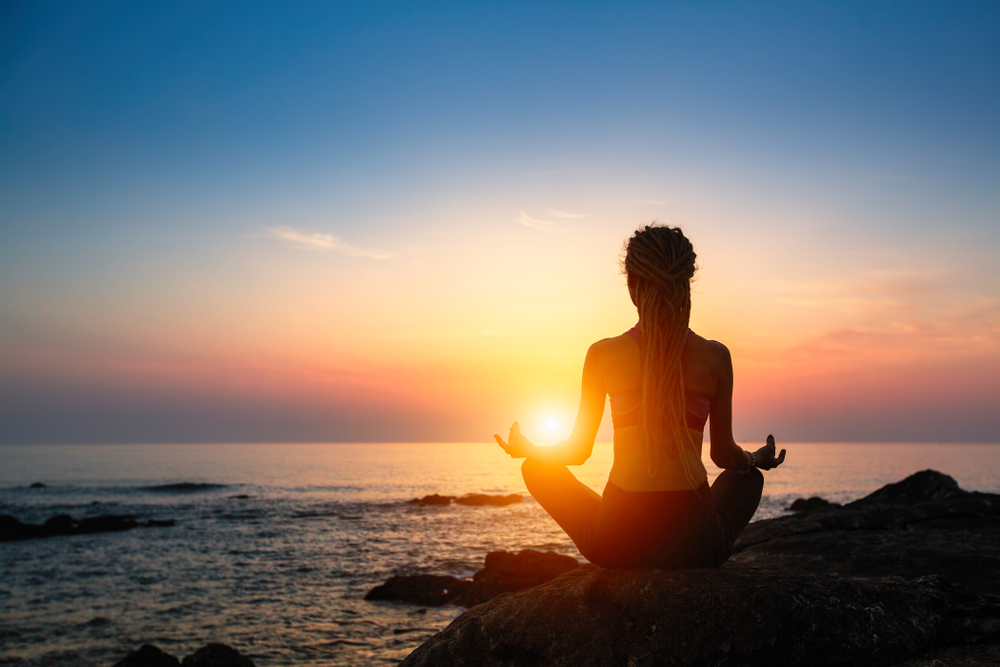 Think about the principles and beliefs that are most important to you. What kind of impact do you want to make in the world? What causes do you feel passionate about? Identifying your values can help guide you toward a purpose that aligns with your beliefs.
Think about the principles and beliefs that are most important to you. What kind of impact do you want to make in the world? What causes do you feel passionate about? Identifying your values can help guide you toward a purpose that aligns with your beliefs. What are your unique talents and skills? What are you good at, and what comes naturally to you? Consider how you can use these strengths to make a difference in the world.
What are your unique talents and skills? What are you good at, and what comes naturally to you? Consider how you can use these strengths to make a difference in the world. Take some time to reflect on what you enjoy doing, what you’re naturally good at, and what activities give you a sense of fulfillment. Consider exploring new hobbies, taking classes, or volunteering in areas that interest you.
Take some time to reflect on what you enjoy doing, what you’re naturally good at, and what activities give you a sense of fulfillment. Consider exploring new hobbies, taking classes, or volunteering in areas that interest you.  Be open to new experiences and challenges. Trying new things can help you discover interests and passions you didn’t even know you had.
Be open to new experiences and challenges. Trying new things can help you discover interests and passions you didn’t even know you had. Volunteering or helping others can give you a sense of purpose and fulfillment. Consider how you can use your skills and passions to make a positive impact on the life of others, you’ll be surprised by the positive effect that will have on your own life and purpose.
Volunteering or helping others can give you a sense of purpose and fulfillment. Consider how you can use your skills and passions to make a positive impact on the life of others, you’ll be surprised by the positive effect that will have on your own life and purpose. 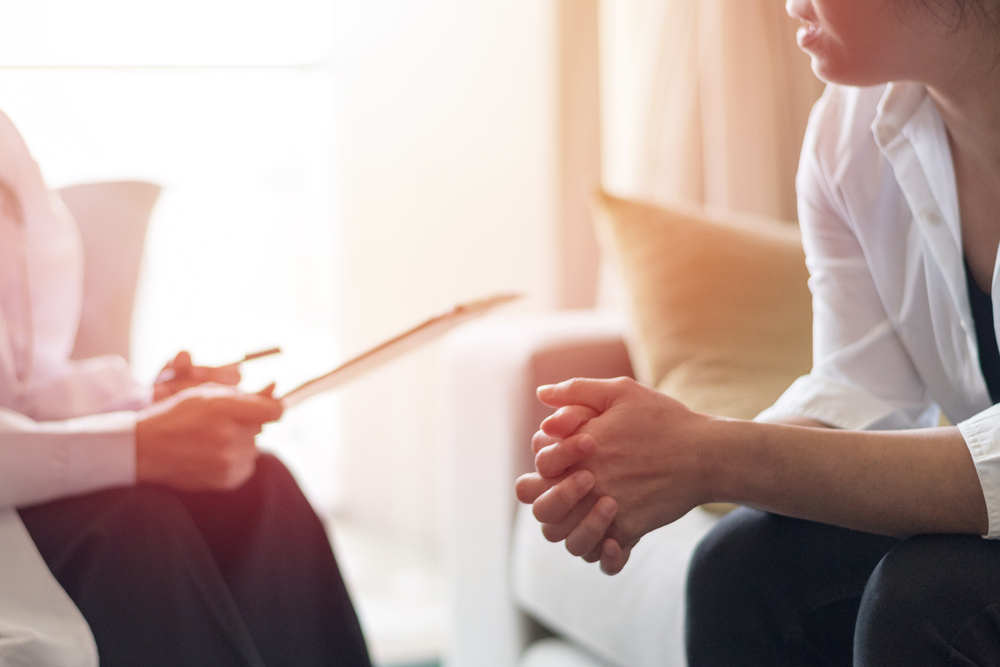 Finding someone who has experience in your areas of interest can be helpful. They can guide you on how to approach your passions and offer insight into the steps you may need to take.
Finding someone who has experience in your areas of interest can be helpful. They can guide you on how to approach your passions and offer insight into the steps you may need to take. Once you’ve explored the different areas of your life and decided which are the things that make you happy, the things you want to change, and the new things you’d love to learn, try, and find fulfillment with, it’s time to set goals.
Once you’ve explored the different areas of your life and decided which are the things that make you happy, the things you want to change, and the new things you’d love to learn, try, and find fulfillment with, it’s time to set goals.  One effective method to set and follow your goals more closely is the SMART framework. This stands for Specific, Measurable, Attainable, Relevant, and Time-bound.
One effective method to set and follow your goals more closely is the SMART framework. This stands for Specific, Measurable, Attainable, Relevant, and Time-bound. 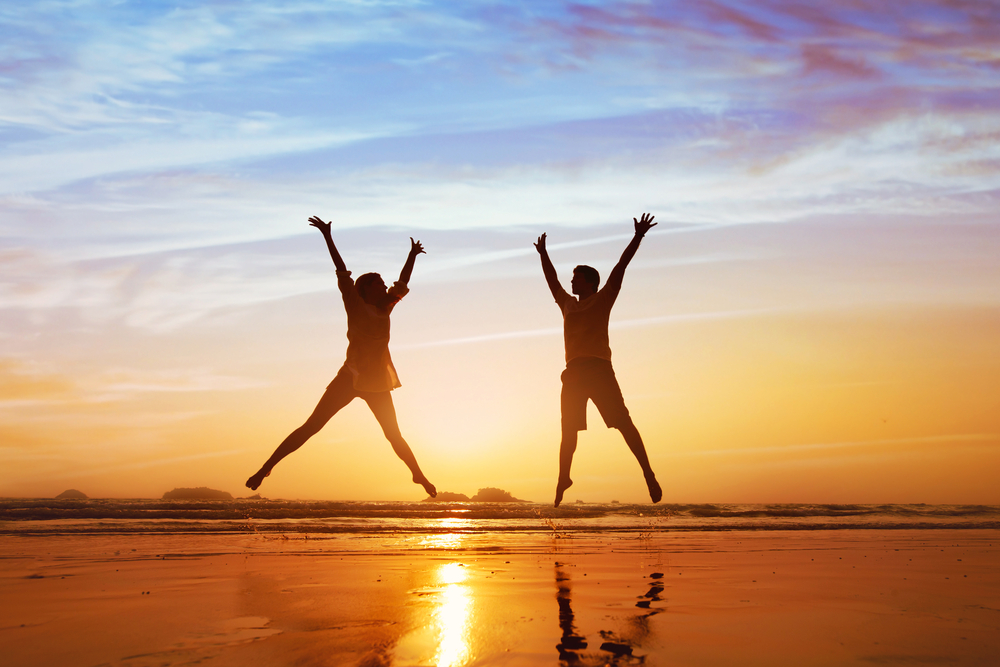 When we surround ourselves with positive and supportive people, we are encouraged and motivated to achieve our goals. So surrounding ourselves with people who care and love us is vital.
When we surround ourselves with positive and supportive people, we are encouraged and motivated to achieve our goals. So surrounding ourselves with people who care and love us is vital. This sentence might sound corny, but that doesn’t make it less of a truth. Seek out friends and family who encourage you, challenge you, and support your goals. Being around people who are negative or unsupportive can be draining and hinder your progress.
This sentence might sound corny, but that doesn’t make it less of a truth. Seek out friends and family who encourage you, challenge you, and support your goals. Being around people who are negative or unsupportive can be draining and hinder your progress. This step isn’t always easy. We sometimes get in the habit of keeping quiet instead of facing friends and family with open and on occasion touchy subjects just to keep the peace.
This step isn’t always easy. We sometimes get in the habit of keeping quiet instead of facing friends and family with open and on occasion touchy subjects just to keep the peace.  It’s not just about talking. it’s also about listening. Listening to others is a way to show that you care, and it can help you gain valuable insights and perspectives.
It’s not just about talking. it’s also about listening. Listening to others is a way to show that you care, and it can help you gain valuable insights and perspectives. Don’t take your loved ones for granted. Let them know how much you appreciate their support and encouragement. A simple “thank you” can go a long way.
Don’t take your loved ones for granted. Let them know how much you appreciate their support and encouragement. A simple “thank you” can go a long way. Regular
Regular  A healthy diet
A healthy diet  Taking time to care for yourself has a significant impact on your overall well-being. An improvised “spa day” where you treat yourself to a massage, or a mani-pedi (even at home and done by yourself) can make all the difference.
Taking time to care for yourself has a significant impact on your overall well-being. An improvised “spa day” where you treat yourself to a massage, or a mani-pedi (even at home and done by yourself) can make all the difference.  Mental health is not only important for overall well-being, but it is also critical in achieving your goals and dreams. Without good mental health, you will hardly ever make progress toward feeling purposeful and fulfilled.
Mental health is not only important for overall well-being, but it is also critical in achieving your goals and dreams. Without good mental health, you will hardly ever make progress toward feeling purposeful and fulfilled. 
 Twelve subgroups of vegetables exist, and each supplies important minerals, vitamins, and dietary fiber that benefit your health. Eating a variety of vegetables offers a range of benefits like lower risk of hypertension and heart disease, improved digestive health, and diabetes control. A diet high in plant compounds helps fight inflammation, supports eye and bone health, improves your skin, and enhances immunity. Vegetables are also high in water content and low in calories, carbohydrates, and fat, and a regular intake helps maintain a healthy weight.
Twelve subgroups of vegetables exist, and each supplies important minerals, vitamins, and dietary fiber that benefit your health. Eating a variety of vegetables offers a range of benefits like lower risk of hypertension and heart disease, improved digestive health, and diabetes control. A diet high in plant compounds helps fight inflammation, supports eye and bone health, improves your skin, and enhances immunity. Vegetables are also high in water content and low in calories, carbohydrates, and fat, and a regular intake helps maintain a healthy weight. 

 Eating meals that are mostly veggies is another way to get your daily quota and ensure you eat vegetables every day. You will find plenty of delicious recipes that make veggies the hero, like smoky quinoa taco bowls, ratatouille stir-fry, stuffed portobello mushrooms or peppers, and veggie frittata. Also, there are a number of creative ways to eat more vegetables, like sneaking them into noodles, puddings, or quesadillas.
Eating meals that are mostly veggies is another way to get your daily quota and ensure you eat vegetables every day. You will find plenty of delicious recipes that make veggies the hero, like smoky quinoa taco bowls, ratatouille stir-fry, stuffed portobello mushrooms or peppers, and veggie frittata. Also, there are a number of creative ways to eat more vegetables, like sneaking them into noodles, puddings, or quesadillas.  Packing a salad for lunch is not only a time-saver but will help you to cut down on empty calories that fast food usually has. To make your salad as healthy, tasty, and colorful as possible, include a variety of vegetables and add some healthy fats and protein to give it a boost. Healthy proteins to add to your salad include chickpeas, eggs, tofu, chicken breast, and sliced tuna. You can finish with healthy fats to make your salad tastier and more filling, like sunflower or pumpkin seeds, pecans, cashews, or avocado.
Packing a salad for lunch is not only a time-saver but will help you to cut down on empty calories that fast food usually has. To make your salad as healthy, tasty, and colorful as possible, include a variety of vegetables and add some healthy fats and protein to give it a boost. Healthy proteins to add to your salad include chickpeas, eggs, tofu, chicken breast, and sliced tuna. You can finish with healthy fats to make your salad tastier and more filling, like sunflower or pumpkin seeds, pecans, cashews, or avocado. You can experiment with different cooking methods to diversify your everyday meals. Dry heat cooking, for example, includes roasting, sauteing, stir-frying, pan-frying, grilling, and barbecuing. You can roast or grill vegetables with healthy oil and garnish them with parsley or dried thyme. Or you can make a stir-fry with seasonal veggies and tofu, chicken, or beef.
You can experiment with different cooking methods to diversify your everyday meals. Dry heat cooking, for example, includes roasting, sauteing, stir-frying, pan-frying, grilling, and barbecuing. You can roast or grill vegetables with healthy oil and garnish them with parsley or dried thyme. Or you can make a stir-fry with seasonal veggies and tofu, chicken, or beef.

 There are plenty of creative ways to incorporate vegetables into your meals, like adding veggies to pancakes, waffles, biscuits, and cakes. You can add zucchini to your brownie batter, carrots to cookies, or avocados to pudding. Sweet potatoes can be pureed into a mousse and squashed into a cheesecake. You can even try vegetable ice cream with sweet corn, tomato, carrot, or beetroot. As veggie ice creams are low in sugar, they are healthier than regular ice creams and can be easily prepared at home.
There are plenty of creative ways to incorporate vegetables into your meals, like adding veggies to pancakes, waffles, biscuits, and cakes. You can add zucchini to your brownie batter, carrots to cookies, or avocados to pudding. Sweet potatoes can be pureed into a mousse and squashed into a cheesecake. You can even try vegetable ice cream with sweet corn, tomato, carrot, or beetroot. As veggie ice creams are low in sugar, they are healthier than regular ice creams and can be easily prepared at home. 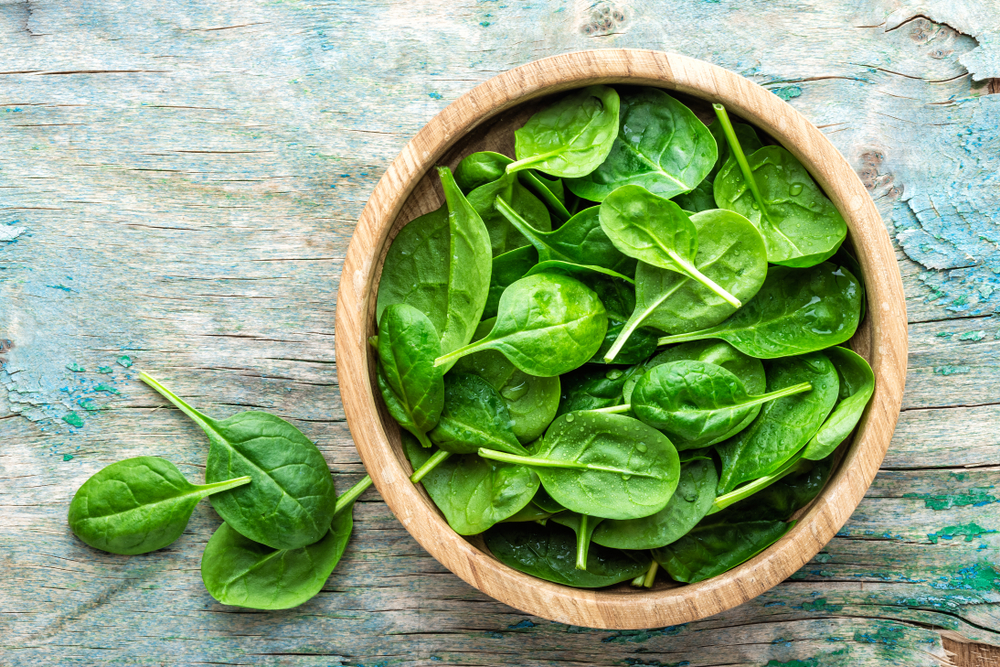 Spinach is rich in a number of nutrients, including potassium, folate, iron, and vitamins K, C, and A. It is also loaded with fiber and essential plant compounds like quercetin and lutein which promote eye and heart health and fight inflammation and infection.
Spinach is rich in a number of nutrients, including potassium, folate, iron, and vitamins K, C, and A. It is also loaded with fiber and essential plant compounds like quercetin and lutein which promote eye and heart health and fight inflammation and infection.
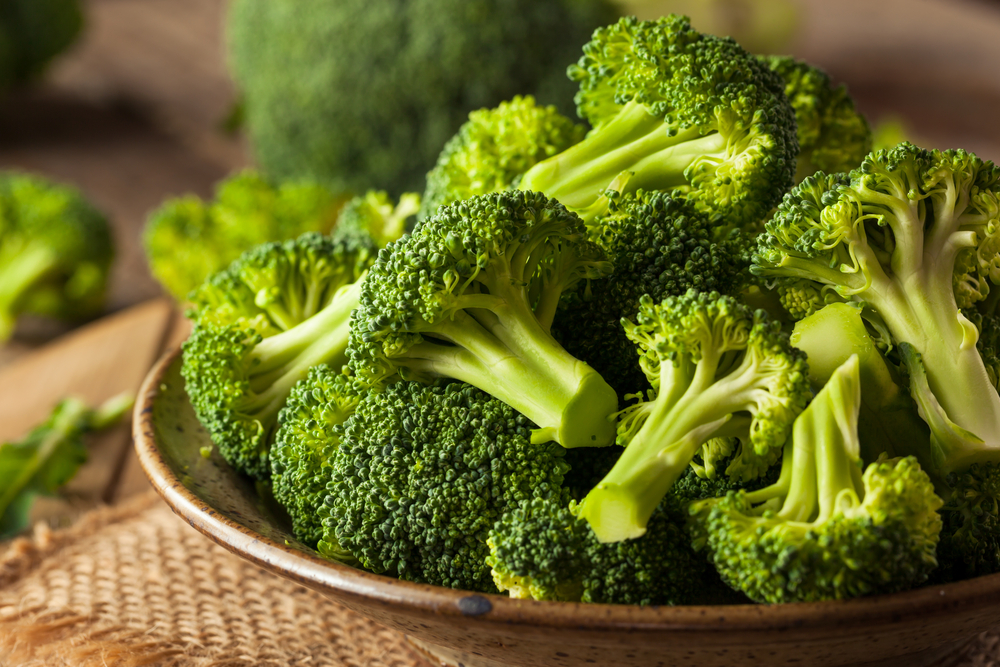 One of the most nutrient-dense vegetables you’ll find year-round, broccoli is packed with potassium, iron, calcium, vitamins K and C, protein, fiber, and folate. When steamed, just one-half cup supplies over 50 percent of your vitamin C daily intake. You need this antioxidant to protect yourself from free radical damage and infections and to maintain good blood vessels, skin, and bone health. Nutrients in broccoli also improve brain function, keep your heart healthy, and support hormonal balance.
One of the most nutrient-dense vegetables you’ll find year-round, broccoli is packed with potassium, iron, calcium, vitamins K and C, protein, fiber, and folate. When steamed, just one-half cup supplies over 50 percent of your vitamin C daily intake. You need this antioxidant to protect yourself from free radical damage and infections and to maintain good blood vessels, skin, and bone health. Nutrients in broccoli also improve brain function, keep your heart healthy, and support hormonal balance.

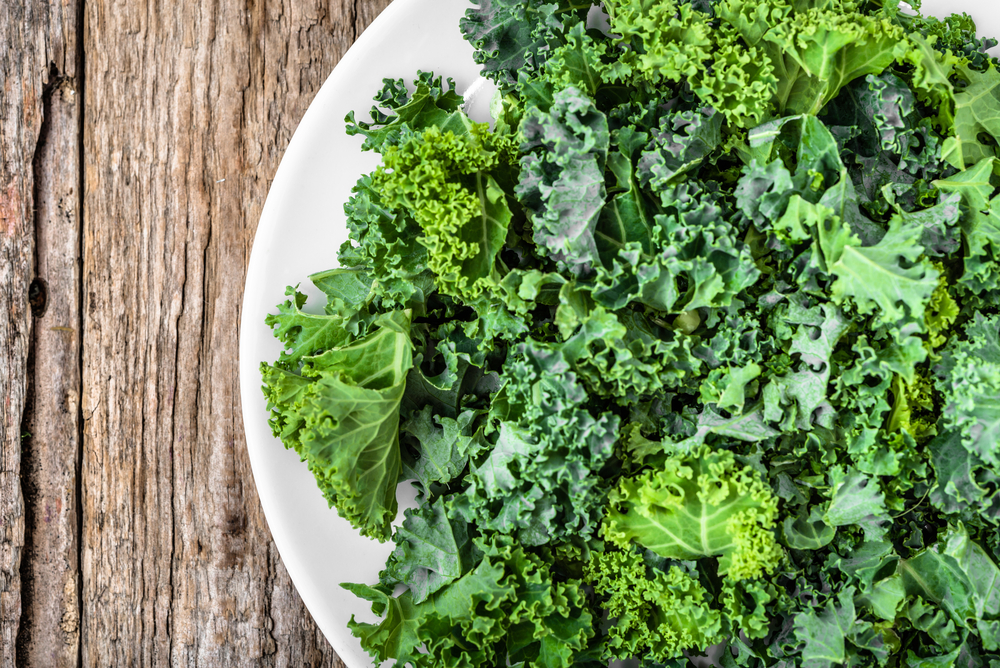





 Sweet potatoes are one of the most nutrient-dense vegetables, packing a good amount of potassium, manganese, and vitamins C and A into each serving. They vary from red and purple to white, yellow-orange, and orange and are rich in fiber and antioxidants like carotenoids and flavonoids which have anti-inflammatory properties. Flavonoids, along with phenolic compounds help balance blood sugar levels, aiding diabetes management. Purple sweet potatoes also contain anthocyanins, a group of antioxidants
Sweet potatoes are one of the most nutrient-dense vegetables, packing a good amount of potassium, manganese, and vitamins C and A into each serving. They vary from red and purple to white, yellow-orange, and orange and are rich in fiber and antioxidants like carotenoids and flavonoids which have anti-inflammatory properties. Flavonoids, along with phenolic compounds help balance blood sugar levels, aiding diabetes management. Purple sweet potatoes also contain anthocyanins, a group of antioxidants
 No single vegetable supplies all the minerals, vitamins, antioxidants, and plant compounds you need to stay healthy and feel your best. Eating a variety of colors, flavors, and types provides your body with the mix of fibers, phytochemicals, and nutrients you need. Expanding variety and increasing your consumption of veggies can benefit your health in a number of different ways. Nutrients in vegetables improve blood pressure, balance blood sugar levels, reduce the risk of heart disease, improve digestive health, and enhance immunity.
No single vegetable supplies all the minerals, vitamins, antioxidants, and plant compounds you need to stay healthy and feel your best. Eating a variety of colors, flavors, and types provides your body with the mix of fibers, phytochemicals, and nutrients you need. Expanding variety and increasing your consumption of veggies can benefit your health in a number of different ways. Nutrients in vegetables improve blood pressure, balance blood sugar levels, reduce the risk of heart disease, improve digestive health, and enhance immunity. Menopause is the point when your ovaries stop releasing eggs and reproductive hormones and you no longer have menstrual periods. The diagnosis of menopause is based on the absence of menstrual bleeding for 12 consecutive months. It is made by reviewing a woman’s symptoms and menstrual and medical history.
Menopause is the point when your ovaries stop releasing eggs and reproductive hormones and you no longer have menstrual periods. The diagnosis of menopause is based on the absence of menstrual bleeding for 12 consecutive months. It is made by reviewing a woman’s symptoms and menstrual and medical history. 



 While short-term insomnia is often due to a traumatic event or stress, menopause-related sleep disturbances are caused by falling levels of progesterone and estrogen. Depression and anxiety, changes in mood, night sweats, and hot flashes also contribute to frequent waking and poor sleep. Symptoms of insomnia include feeling tired or sleepy during the day, waking up too early, less than 6 hours of sleep at night, and not feeling rested when you wake up.
While short-term insomnia is often due to a traumatic event or stress, menopause-related sleep disturbances are caused by falling levels of progesterone and estrogen. Depression and anxiety, changes in mood, night sweats, and hot flashes also contribute to frequent waking and poor sleep. Symptoms of insomnia include feeling tired or sleepy during the day, waking up too early, less than 6 hours of sleep at night, and not feeling rested when you wake up.







 Menopause and the symptoms it can bring can hurt your quality of life. Sleep may become elusive, with hot flashes and night sweats leaving you exhausted and low. Many women also experience anxiety, mood swings, brain fog, and a devastating loss of confidence and become socially withdrawn as a result.
Menopause and the symptoms it can bring can hurt your quality of life. Sleep may become elusive, with hot flashes and night sweats leaving you exhausted and low. Many women also experience anxiety, mood swings, brain fog, and a devastating loss of confidence and become socially withdrawn as a result.









 While stroke incidence is lower in women, transitioning to menopause is when estrogen levels drop and
While stroke incidence is lower in women, transitioning to menopause is when estrogen levels drop and






 There are a number of reasons why you could be engaging in emotional eating. It can be a way to distract yourself from strong emotions such as anger, fear, guilt, or frustration that you don’t feel capable of handling.
There are a number of reasons why you could be engaging in emotional eating. It can be a way to distract yourself from strong emotions such as anger, fear, guilt, or frustration that you don’t feel capable of handling. Fried foods such as French fries, hushpuppies, and chicken strips are high in trans and saturated fats. Trans fats, in particular, are linked to a number of health conditions such as obesity, diabetes, and heart diseases.
Fried foods such as French fries, hushpuppies, and chicken strips are high in trans and saturated fats. Trans fats, in particular, are linked to a number of health conditions such as obesity, diabetes, and heart diseases. Fast food and unhealthy snacks like chips and biscuits are often high in sugar, salt, trans fats, empty calories, and processed preservatives. While consuming junk food occasionally shouldn’t be an issue, having it frequently can put you at risk of being overweight, and having cardiovascular disease, stroke, and type 2 diabetes.
Fast food and unhealthy snacks like chips and biscuits are often high in sugar, salt, trans fats, empty calories, and processed preservatives. While consuming junk food occasionally shouldn’t be an issue, having it frequently can put you at risk of being overweight, and having cardiovascular disease, stroke, and type 2 diabetes. An unbalanced diet is one where fiber, carbohydrates, fats, and protein are consumed in amounts that are too large or too small. A
An unbalanced diet is one where fiber, carbohydrates, fats, and protein are consumed in amounts that are too large or too small. A  Stress affects eating habits in different ways. Some people mindlessly munch in response to stressful situations while others ignore hunger cues or experience a loss of appetite. Those who engage in emotional eating are attempting to comfort or distract themselves from whatever they are feeling. This could be a symptom of stress eating disorder where people turn to food to avoid dealing with challenging situations or facing their own stuff.
Stress affects eating habits in different ways. Some people mindlessly munch in response to stressful situations while others ignore hunger cues or experience a loss of appetite. Those who engage in emotional eating are attempting to comfort or distract themselves from whatever they are feeling. This could be a symptom of stress eating disorder where people turn to food to avoid dealing with challenging situations or facing their own stuff.  Many of us are doing something else while eating, finishing a meal, and not remembering how much or what we ate. Eating with little awareness or on autopilot is the opposite of mindful eating, which is the practice of paying attention to your emotions and cognitive state while having a meal.
Many of us are doing something else while eating, finishing a meal, and not remembering how much or what we ate. Eating with little awareness or on autopilot is the opposite of mindful eating, which is the practice of paying attention to your emotions and cognitive state while having a meal. One way to avoid boredom eating is to find something that is fun and you truly enjoy doing. If you like gardening, dancing, drawing, or board games, try that.
One way to avoid boredom eating is to find something that is fun and you truly enjoy doing. If you like gardening, dancing, drawing, or board games, try that. Meditation and mindfulness can be powerful tools for building a healthy connection with food and your body. People who engage in emotional eating often feel regret, shame, and guilt after an episode of binge eating. These negative emotions are not only judgmental but if left unnoticed, they can produce even more negative emotions and judgment.
Meditation and mindfulness can be powerful tools for building a healthy connection with food and your body. People who engage in emotional eating often feel regret, shame, and guilt after an episode of binge eating. These negative emotions are not only judgmental but if left unnoticed, they can produce even more negative emotions and judgment.
 Emotional eating occurs when you use food for comfort and stress relief or for numbing strong negative emotions like anxiety, frustration, sadness, loneliness, and guilt. It has nothing to do with hunger and satiety and often becomes a habit that’s hard to break. You used to reach for candy or another sweet snack anytime you felt lonely, anxious, or upset.
Emotional eating occurs when you use food for comfort and stress relief or for numbing strong negative emotions like anxiety, frustration, sadness, loneliness, and guilt. It has nothing to do with hunger and satiety and often becomes a habit that’s hard to break. You used to reach for candy or another sweet snack anytime you felt lonely, anxious, or upset. 











